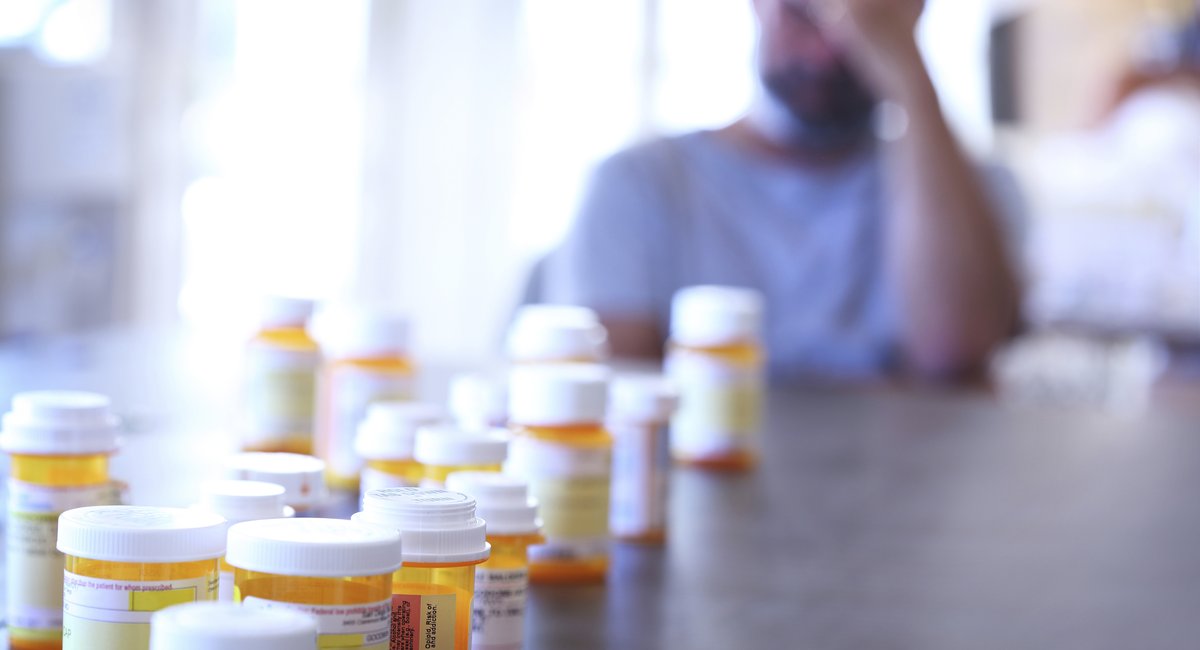New Yorkers are far less likely to leave their doctors’ offices with prescriptions for drugs like Vicodin or Percocet today than they were a decade ago, according to a new report from the state health department.
Statewide, there was a 42% decrease in the number of opioid prescriptions filled between 2013 and 2022, according to the report. And patients now rarely get more than a seven-day supply of opioids from their first prescription, it finds.
While state health officials are celebrating the decline in opioid prescriptions, some drug policy researchers and doctors worry about unintended consequences — including pushing patients to street drugs. Overall opioid deaths both in New York and nationally have risen sharply in recent years, although preliminary data from the U.S. Centers for Disease Control and Prevention showed a slight decline in 2023.
Doctors started cutting back on opioid prescriptions after legislators in New York and other U.S. states scrambled to pass laws in the 2010s to address rising rates of opioid addiction and overdose. In 2013, New York enacted a law requiring doctors to monitor patients’ opioid consumption via an electronic database, and in 2016 a law took effect limiting the supply of opioids doctors could dole out in the first prescription.
In 2022, only about 15% of new prescriptions for opioids were for more than a seven-day supply, compared with 34% before the law was enacted, according to the health department report.
“It is encouraging to see this positive trend of decreased prescribing for prescription opioids,” state Health Commissioner Dr. James McDonald said in a statement. “I thank our dedicated medical professionals who prescribe judiciously and balance risk and benefit for their patients.”
But some patients who need opioids to manage chronic pain now face barriers to getting them, according to the Medical Society of the State of New York.
Studies have also found that abruptly cutting off the supply of prescription opioids for patients who were dependent on them likely led some to pivot to heroin, driving another wave of overdose deaths, said Magdalena Cerdá, director of the Center for Opioid Epidemiology and Policy at NYU’s Grossman School of Medicine.
“Had treatment been more available, that might have prevented some of these unintended consequences,” Cerdá added. She noted that there was less access at the time to the opioid replacement medication buprenorphine, which heads off the effects of opioid withdrawal.
The CDC refers to the increase in opioid prescriptions in the 1990s as the first wave of the opioid epidemic, and says a second wave characterized by a rise in heroin overdoses followed in the 2010s. That has since given way to the third wave, which is driven by illegally produced synthetic opioids like fentanyl, according to the CDC.
Overdose deaths in New York and nationally declined slightly in the years following a 2017 national public health emergency declaration, but began spiking back up around 2020 and reached new highs in 2021 and 2022.
Cadence Acquaviva, a spokesperson for the state health department, did not directly respond to concerns that restrictions on opioid prescribing contributed to a rise in the use of street drugs, but acknowledged that “there are other pathways to opioid use.”
Cerdá said the lesson learned from prescription opioid policies is that strategies seeking to reduce risky drug use by cutting off the supply must be accompanied by efforts to address the ongoing demand for those products — including the underlying stressors that drive people to misuse drugs in the first place.
Sheila Vakharia, deputy director of research and academic engagement at the Drug Policy Alliance, which advocates for drug reforms, agreed with Cerdá’s assessment.
She added that policies restricting prescribing and promoting prescription monitoring have also “created a suspicion and mistrust by providers for patients who might be asking for these medications or who actually have legitimate pain that needs to be treated.”
Dr. Jerome Cohen, president of the Medical Society of the State of New York, said his organization has worked with the state health department to educate doctors about best practices when it comes to opioid prescribing, and he doesn’t have a problem with some limitations on prescriptions.
But he added that the backlash against opioids has led many insurance companies to require doctors to obtain prior approval to prescribe the pain relievers, even when they’re renewing prescriptions in some cases.
“There are now some unmet needs,” he said. “Some patients who need opioid prescriptions are not getting them.”
Dr. Douglas Allen runs a pain medicine practice in Manhattan that uses a variety of pain management strategies in addition to opioids. He said he thinks the state laws limiting opioid prescribing helped go after “bad apples” who were over-prescribing. But he noted that sometimes patients balk when he suggests they might benefit from an opioid.
“It just requires education to explain how these specific medications would be appropriate for their conditions,” he said.
Allen said he always tries to assess whether patients are using opioids long term to manage their pain or avoid feeling withdrawal symptoms.
“If the patient has been taking medication to not experience withdrawal, then there are better options such as buprenorphine,” Allen said.
The state health department report on opioid prescribing found that it’s still more prevalent in areas outside of New York City. It’s still unclear why, but that provides the state with data on how it “can best target education and services” in the future, Acquaviva said.
